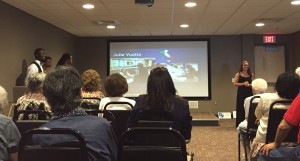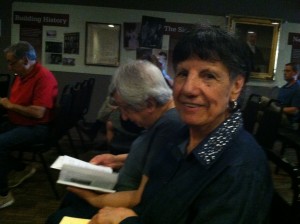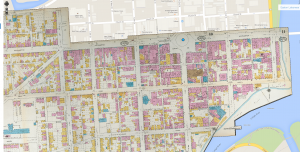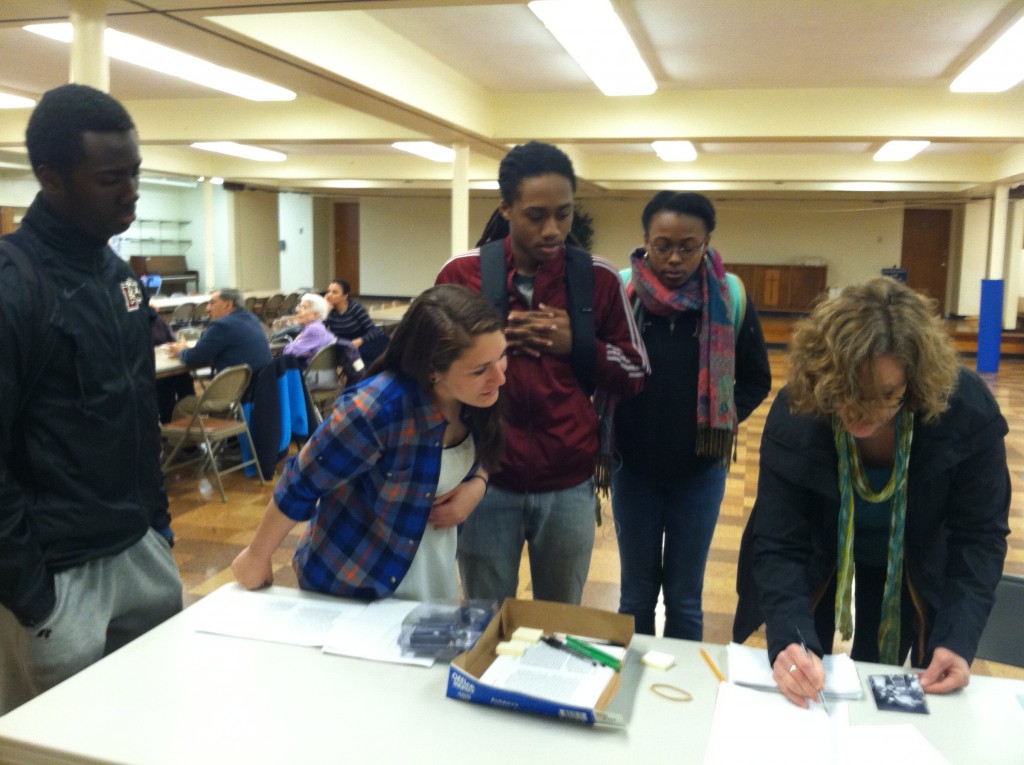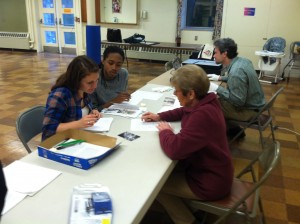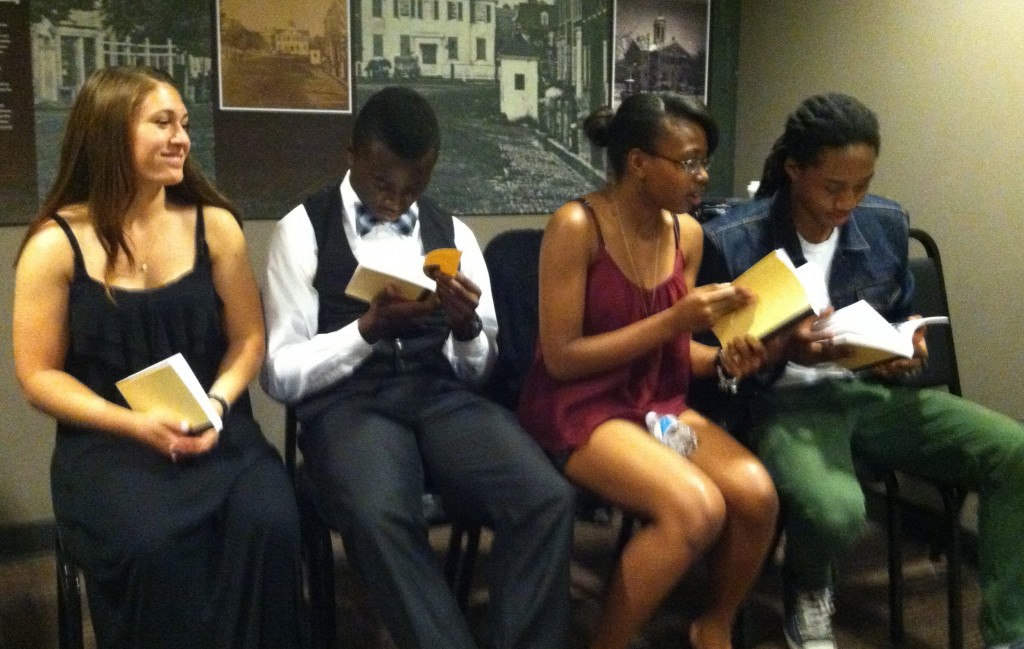
Students Julianna Vuotto ’17, Marcus Vilme ’17, Kamani Christian ’17, and Dawit Blackwell ’17 check out the latest edition of “Remembering the Taylor School and 4th and Lehigh Neighborhood.”
Professor Andrea Smith’s “Rebuilding Shattered Worlds through Recollection” (A&S 244) class gave a special presentation of their final project at the Sigal Museum. This semester, the class contributed to the ongoing digital public history project “Lebanese Town,” and have been busy interviewing local residents and collecting photographs and memorabilia from former residents of Easton’s Lebanese neighborhood that was lost to urban renewal in the 1960s. The students were able to share their work with the contributors in a collected edition of their stories.
The book is a compilation of research conducted across several years and two semesters of student research. This year’s class was able to draw on the previous class’s research to create multi-faceted chapters and to expand the earlier research. Their additions include a chapter on the Italian-American residents, additional sections to chapters on the African-American experience, childhood, and a chapter on home remedies and cures handed down from the old world, and the class’ favorite new chapter, “Consumption in Yesteryear” that brings together all of the stories of the specialty food like the local lemon ice and boiled peanuts and the various ‘mom and pop shops’ that populated the neighborhood. These are the moments in the interviews where the residents’ memories are clear and marked by a joyous nostalgia for their childhood.
This enthusiastic nostalgia was evident in yesterday’s presentation. As each image appeared on the screen, the audience delighted in seeing their own photos included in the project. Every image sparked a renewed discussion of the content, with each person reconstructing the story told in the photo from their memories. All of the contributors got to take home a copy of the book signed by the student authors.
The book is the first stage of the larger Lebanese Town digital project. Since many of the residents are now in their 70s and 80s, they felt that a book would be a better medium for sharing this work with their families. The larger digital project is currently under development with Digital Scholarship Services. Professor Smith has been working closely with DSS’ Visual Resources Curator Paul Miller to collect, scan, and catalogue all of the materials the students have collected. These photos and stories will then be pinned to the digitized map of Easton from 1919 before this section of town was razed, to create a holistic view of the neighborhood. To learn more about the project visit our previous post.
For the students this process has been a unique experience, one that made them feel closer to their new home in Easton and that has fostered great relationships between the students and the residents. “I’ve never worked on a project like this,” says Marcus Vilme ’17. “It’s a great feeling to know that my work is now part of something bigger than my class. Unlike a term paper that will get read maybe once or twice, this project has contributed to something that the whole community benefits from.” The residents’ excitement in seeing their own stories preserved and their appreciation for the students’ hard work was a better reward than any grade.
For more information on starting a digital project with DSS or applying for an internship opportunity contact us at digital@lafayette.edu, or call (610) 330-5796.

